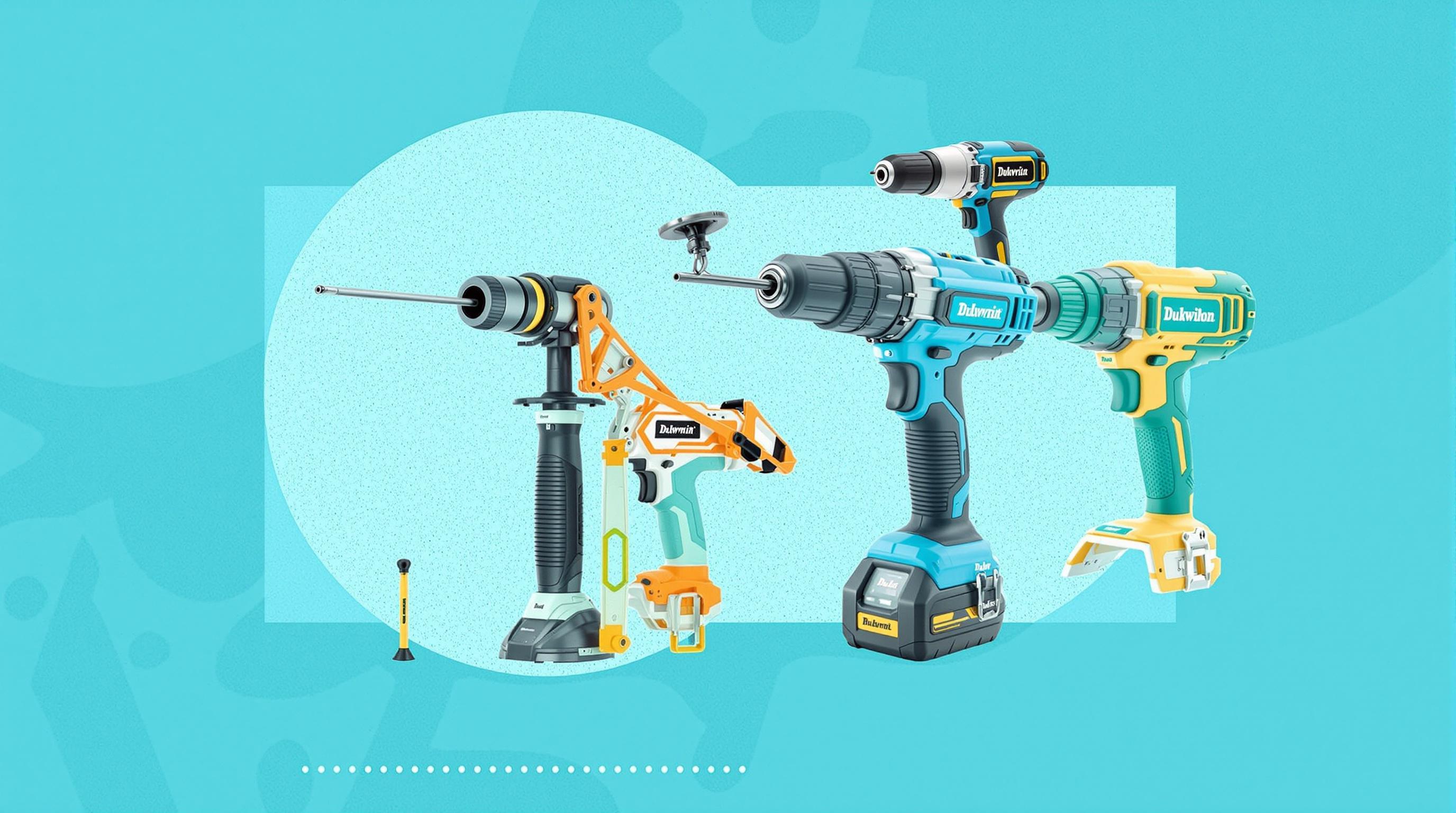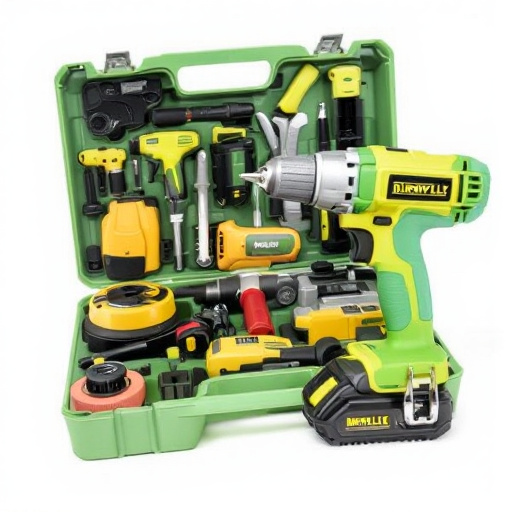Featured Articles
- 7 Game-Changing Electric Screwdrivers Released in the Last 5 Years Ranked for Ultimate DIY Efficiency
- Revolutionizing DIY: How Upcycled Home Tools are Shaping Sustainable Renovation Trends
- The Hidden World of DIY Biohacking: Unleashing Your Home Tools for Wellness Innovation
- The Rise of DIY Urban Gardening: Tools and Supplies for Crafting Green Spaces in Small Places
- The Rise of Eco-Friendly Home Tools: Transforming Sustainability into Everyday DIY Projects
The Rise of DIY Urban Gardening: Tools and Supplies for Crafting Green Spaces in Small Places
The Rise of DIY Urban Gardening: Tools and Supplies for Crafting Green Spaces in Small Places
Urban gardening has surged in popularity as a way for city dwellers to reclaim green spaces and nurture their connection to nature, all while utilizing limited square footage. This article explores the essential tools and supplies needed for successful DIY urban gardening, alongside inspiring stories and practical advice aimed at gardening enthusiasts of all ages.
The Allure of Urban Gardening
As cities become increasingly crowded and the concrete jungle expands, a paradox emerges: the yearning for green space. Urban gardening isn't just a trend; it’s a response to the rapid urbanization affecting our lives. A report by the United Nations indicates that as of 2020, more than 55% of the world's population lived in urban areas, with that number expected to rise to 68% by 2050 (UN, 2018). Many are turning to their balconies, rooftops, and even windowsills to create patches of greenery.
Tools of the Trade
Equipping yourself properly is essential to maximizing your gardening potential in small places. Here’s a rundown of must-have tools:
- Hand Tools: A solid set of hand tools, including a trowel, pruners, and a hand rake, is vital. These tools allow for precise work without taking up too much room.
- Container Gardening Supplies: Since space is often restricted, investing in high-quality pots, vertical planters, or self-watering containers can help you grow a variety of plants without overwhelming your limited area.
- Soil and Fertilizers: Quality potting soil is a foundation. For those looking to go organic, consider compost or natural fertilizers to enrich your plants' diets.
- Seeds and Plants: Opt for dwarf or compact varieties of plants that thrive in containers. Herbs, cherry tomatoes, and even strawberries can flourish in urban settings.
- Watering Tools: A simple watering can is nice, but consider drip irrigation systems for efficiency, especially in a hotter climate.
A Story of Transformation
Meet Sarah, a 28-year-old urbanite who transformed her tiny balcony into a flourishing garden oasis. Sarah started with a single pot of basil and quickly graduated to a vertical garden system that now houses several herbs, tomatoes, and even a few flowers. "I was amazed at how much I could grow in such a small space! It’s not just about the food; it’s about peace of mind," she shares. With $200 invested in pots, soil, and seeds, Sarah not only beautified her apartment but also enjoyed the bounty of her labor.
Diving into Hydroponics
Consider going beyond traditional planting with hydroponics, a method that allows you to grow plants in a nutrient-rich water solution, cutting down on soil needs—a fantastic solution for urban gardeners who face space constraints. Studies have shown that hydroponically grown plants can yield up to 30% more than those grown in soil. Hydroponic systems vary in complexity, from simple DIY setups employing mason jars to more sophisticated, automated systems.
An Unexpected Benefit: Stress Relief
The physical act of gardening is not only rewarding but therapeutic. The American Psychological Association notes that spending time in green spaces can reduce stress and anxiety. Urban gardening offers a perfect escape from the hustle and bustle of city life. Just imagine coming home to water your plants or harvesting fresh basil for dinner!
Connecting with Nature—Even in the City
Urban gardening is about more than just aesthetics—it's about cultivating a connection to nature, which can often feel elusive in a city setting. When you nurture a living thing, you develop a sense of responsibility and pride. Many gardens, including community gardens, serve as a breeding ground for friendship, networking opportunities, and collective problem-solving among neighbors.
The Risks of Urban Gardening
Of course, urban gardening comes with its challenges. Potential hazards such as soil contamination from pollution or pests can lead to gardeners feeling overwhelmed. However, many have found that with meticulous planning, these risks can be managed effectively. Regularly testing your soil can inform you about contaminants, while companion planting can keep pests at bay without resorting to chemical treatments.
Making It Accessible
Everyone should have the opportunity to engage with gardening. Initiatives such as "Green Gym," which combines exercising outdoors while gardening, promote an accessible approach to urban gardening, even for people with physical limitations. According to a study published in the journal "Environmental Science & Technology," community gardens can significantly improve health outcomes and social well-being.
Statistics That Speak Volumes
Statistics reveal a growing trend toward DIY urban gardening. According to a survey from the National Gardening Association, 35% of U.S. households participated in food gardening in 2020, a figure that has only increased post-pandemic as more people seek self-sufficiency and solace in gardening. Additionally, the market for gardening supplies has experienced a significant uptick, as more individuals invest in their green spaces.
Simple Steps to Start Your Urban Garden
Getting started is easier than you might think! Follow these simple steps:
- Determine your space: Assess what you have—balcony, rooftop, or even a windowsill. Every inch counts!
- Choose your plants: Depending on your available space, research what plants will thrive. Consider your culinary preferences and how much sunlight your area receives.
- Gather your supplies: Based on your chosen plants, gather the necessary tools and materials.
- Start small: Begin with a few pots or containers. Over time, you can expand your garden as you gain experience.
Neighbors Helping Neighbors
One of the most heartwarming aspects of urban gardening is the way it fosters community. Across the globe, urban dwellers are sharing their experiences, exchanging seeds, and cultivating friendships through community gardens. In cities like Detroit, where vacant lots often dominate, local organizations are turning these spaces into community gardens, providing fresh produce to those in need while strengthening social bonds. The "Detroit Black Community Food Security Network" is an exemplary organization that has helped transform countless vacant lots into vibrant green spaces.
Adapting to Your Environment
Climate also plays a critical role in determining which plants will thrive in your urban garden. Understanding your USDA Hardiness Zone can help you make informed decisions about what to plant. For instance, if you live in a warmer climate, opt for heat-tolerant varieties of vegetables and herbs. In contrast, cooler areas may require plants better suited to withstand frost.
Conclusion: The Future is Green
As urban gardening continues to rise, it offers a unique intersection of creativity, sustainability, and community building. No matter your age or gardening experience, there’s always room for more green in our lives—whether you are 16 or 70. So gather your tools, choose your plants, and let the cultivation of your own urban oasis begin!
Final Thoughts on Getting Inspired
Never underestimate the power of a simple backyard, balcony, or rooftop garden. Many urban gardeners have discovered not just the joy of growing and nurturing plants, but also the deep satisfaction that comes from creating something beautiful and beneficial—even in the smallest spaces. As noted by famed botanist and plant explorer, Richard Munson, “Gardening teaches us responsibility and patience, and in today’s digitized world, it offers a welcome reminder of nature’s blessings.” So, dive in, experiment, and most importantly, have fun with your urban gardening journey!




